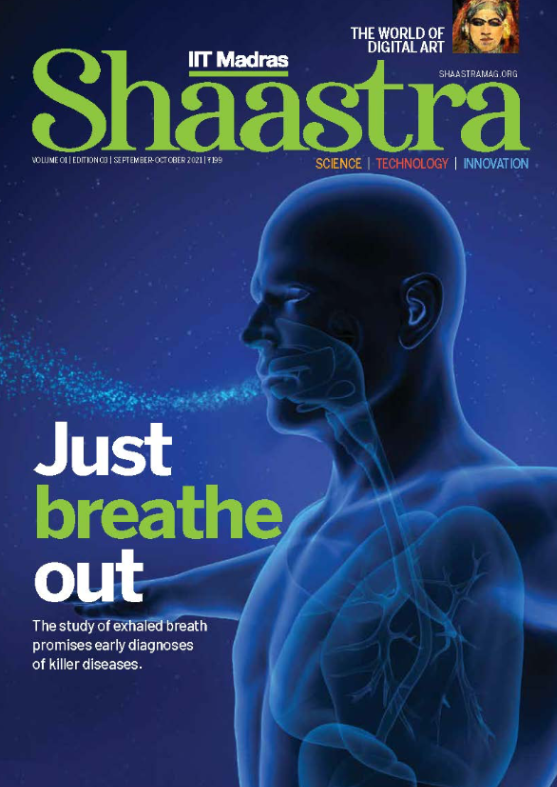Class will tell
-
- from Shaastra :: vol 04 issue 05 :: Jun 2025

Neuroscientists have established that anxiety and social status reshape the brain's emotion centre.
For nearly 25 years, Sumantra Chattarji has been captivated by how stress can impact the amygdala, an almond-shaped structure in the brain that serves as the hub for emotions. In study after study, he has demonstrated – mainly through rats – that chronic stress can reinforce and thicken the web of connections between neurons in the amygdala. This enhanced connectivity primes the mind for anxiety to emerge more easily and for fear to hit harder.
Now, Chattarji and his colleagues at the National Centre for Biological Sciences (NCBS), Bengaluru, and The University of Edinburgh have shown that the amygdala does more than just react to stress; it also rewires itself in response to social inequality. In experiments on lab rats, the researchers have found that rats with "low social rank" in the rat hierarchy, when exposed to stress, develop a hyperactive amygdala, which processes anxiety, excitement, and fear.
The findings, published in the Proceedings of the National Academy of Sciences (bit.ly/rat-social-stress), provide a possible neurobiological insight into how inequality might impact the brain and behaviour. "Stress and low social rank is a double whammy," says Chattarji, Director at the privately funded Centre for High Impact Neuroscience and Translational Applications, Kolkata, and a former scientist at the NCBS. "Not everything in rats can be extrapolated to humans, but these findings raise a provocative question: could stress and low social status similarly reshape the amygdala in people?"
Medical studies have consistently indicated that depression and certain other mental health disorders are more prevalent among socially disadvantaged groups. Low socioeconomic status, discrimination, or social isolation increase vulnerability to mental illness. "Psychological theories point to a definite link between poverty, perceptions of powerlessness, and depression," says Sanjeev Jain, a psychiatrist and Emeritus Professor at the National Institute of Mental Health and Neurosciences, Bengaluru. The new results could underpin the mechanisms that account for such prevalence patterns of mental disorders.
Chattarji, collaborator Richard Morris, Director of the Centre for Discovery Brain Sciences at The University of Edinburgh, and research scholars Durga Srinivasan and Vijayakumar Kapgal designed experiments to first evaluate groups of rats to classify each on a scale of "social dominance". Then, they studied changes in the amygdala in socially dominant and low-ranking, or subordinate, rats exposed to a single, high-intensity stress episode: two hours of immobilisation. Whether scurrying for leftover food in garbage or confined to a cage, rats instinctively move a lot, and being forced to remain still for that long is intensely stressful.
The study was constrained by its reliance on a simplified test for social dominance – a tug-of-war between pairs of rats – which cannot capture nuances of social hierarchies in human populations. Nevertheless, it revealed stark patterns: dominant and subordinate rats showed different levels of stress-induced effects on the density of connections in the amygdala after exposure to a single episode of stress. Dominant rats that had not been exposed to stress continued to win the tug-of-war game, but subordinate rats that had previously lost sometimes started to win against previously dominant rats that had been exposed to stress. Subordinate rats consistently displayed submissive behaviour – continuing to lose the game – and showed the highest levels of enhanced connectivity within the amygdala, specifically in a subregion known as the basolateral amygdala.
These findings in lab rats offer a striking parallel to the structural and connectivity changes in the amygdala observed in humans. Multiple earlier studies have shown that adults with anxiety disorders have enlarged and unusually dense connections in the basolateral amygdala. A study by Vinod Menon and his colleagues at Stanford University, published in the journal Biological Psychiatry in 2013 (bit.ly/amygdala-anxiety), revealed similar patterns in children.
While modern pharmacological treatments for anxiety and other mental health disorders focus primarily on regulating levels of chemicals called neurotransmitters, they often pay limited attention to changes in brain circuitry or the psychosocial factors that influence mental health. The biopsychosocial model is widely endorsed in theory, but in clinical practice, treatment is often skewed toward pharmacological interventions. Trauma, stress, family dynamics, and other social factors that could impact mental health are not always integrated into care.
The convergence of new findings from lab rats and longstanding epidemiological patterns opens up research avenues to probe whether a patient's position in social hierarchies might influence how they respond to psychiatric medication. Chattarji says: "Our findings compel us to ask whether current treatments fully account for the brain's sensitivity to lived experience."
PAST ISSUES - Free to Read


Have a
story idea?
Tell us.
Do you have a recent research paper or an idea for a science/technology-themed article that you'd like to tell us about?
GET IN TOUCH














